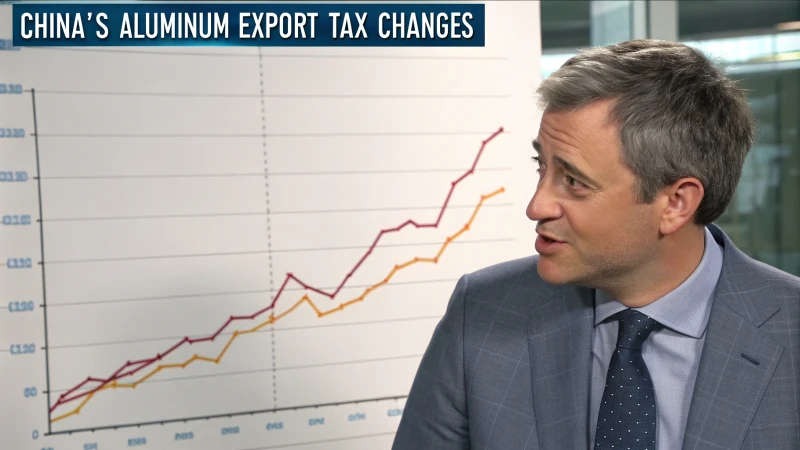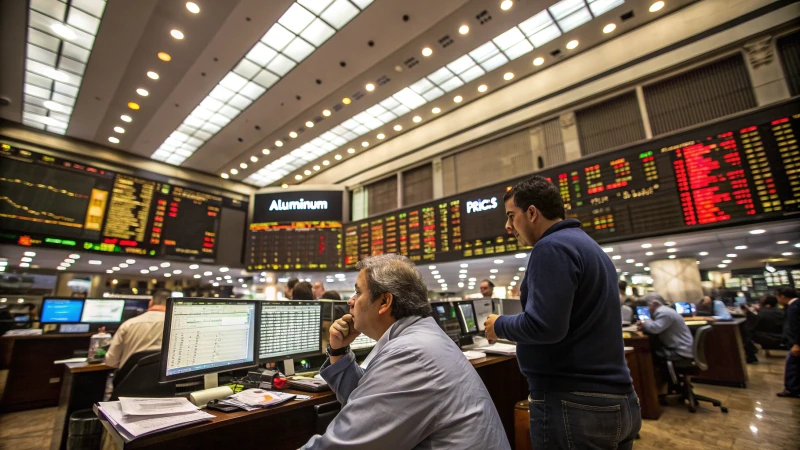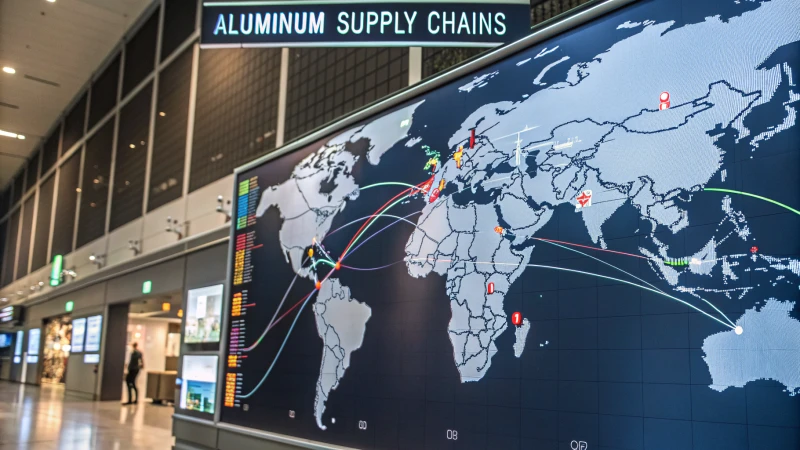China’s Export Tax Bombshell Rocks Aluminium Market

When China changes its policies, people across the globe notice, particularly in aluminum markets.
China decided to stop giving tax rebates for trading aluminum. Export costs will probably rise. Market dynamics face disruption. Local supply could increase and prices at home may drop. Global trade will likely see changes.
I remember the day the news arrived. I was drinking my morning coffee and reading updates on my tablet when the headline about China’s aluminum tax change caught my eye. For someone like me with over ten years in the aluminum industry, this wasn’t just another small change. This was a major shift that could really change market landscapes.
At first, the effects seemed scary – higher costs for exports and market ups and downs. But the long-term effects are what really get me thinking. Companies probably need to change direction, focusing on new ideas and better quality to stay ahead. It reminds me of when I had to rethink my business plan after a big client decided to handle things on their own. It was tough, yes. It also pushed me to try new paths and eventually led to bigger chances.
I see a chance for growth now. There’s potential for success by reaching local markets better or creating high-value products. Those willing to change and think outside the box may find new opportunities. And that’s what keeps me excited about this industry. It’s always changing and there’s always something new to learn and discover.
Removal of tax rebates increases domestic aluminum supply.True
Exporters face higher costs, leading to less export enthusiasm and more domestic supply.
LME aluminum prices fell after China's policy change.False
LME prices actually rose by 5.56% following the policy announcement.
What Are the Immediate Market Reactions to China’s Policy Change?
China’s new tax rebate for aluminum draws a lot of attention in world markets. Investors watch closely. This change probably alters market dynamics. It affects how investors feel and act.
China’s change in aluminum policy leads to more supply inside the country. Prices on both LME and SHFE become unstable. Exports might rise before the policy starts.

Understanding Market Changes
The removal of export tax rebates in China made me think of a time when I had to quickly adapt my business after a supplier changed prices unexpectedly. This caused a whirlwind of changes, similar to the current aluminum market situation1. Export costs are rising for sellers, so more aluminum is staying in China. It fills up the local market and lowers prices. The global market feels this too; on the London Metal Exchange (LME), prices rose by 5.56% as investors quickly adjusted their strategies.
On the other hand, over at the Shanghai Futures Exchange (SHFE), there was a different reaction with a 1.63% drop. This shows a cautious domestic market trying to figure out future supply and demand. Investors stand nervously, uncertain about the next move. They really want to know what will happen.
| Market | Price Change |
|---|---|
| LME | +5.56% |
| SHFE | -1.63% |
Short-term Export Effects
I once had to hurry to ship an order before a new trade rule started. Exporters in China probably feel the same urgency now. They rush to send aluminum out before higher tariffs make exports less appealing. This rush could disrupt the market balance for a short time, with past patterns suggesting brief but noticeable price spikes.
Company Strategy Changes
Companies may adjust their strategies due to these shifts. It’s like when I found my old business model was failing, so I focused on high-end products. By concentrating on niche markets or improving product quality, firms strive to remain competitive despite changes. Analysts view this as a chance for innovation – perhaps an opportunity to bring fresh ideas to the aluminum industry2.
The impact continues beyond just aluminum. Industries connected to aluminum, like solar energy, might change prices because of these tax policy changes. These shifts might be just what these industries need to rethink their structures, showcasing how China’s policies are changing various industrial scenes3.
China's aluminum export tax rebate removal raises export costs.True
The policy directly increases costs for exporters, reducing export enthusiasm.
Domestic aluminum prices will rise due to increased supply.False
Increased domestic supply from reduced exports could lower prices.
How will the cancellation of China’s export tax rebates affect aluminum prices?
Have you ever thought about how a change in rules in China might affect the world’s aluminum market?
China plans to stop giving tax rebates on aluminum exports. More supply will probably stay inside China, which lowers prices there. Then, international prices might increase because China sends out less aluminum. This change could really shake up global markets.

Immediate Market Reactions
I recall the day I learned about China’s new policy on export tax rebates for aluminum. It felt like dropping a rock into still water; the effects were instant. Aluminum prices on the London Metal Exchange jumped 5.56%, while Shanghai’s prices fell 1.63%. This quick shift was like watching a seesaw move, showing just how sensitive aluminum markets4 are to policy changes.
Short-Term Domestic Price Adjustments
I remember when I first dealt with such market changes. Exporters quickly shifted focus to domestic sales because exporting became more costly without tax rebates. This often led to a lot of aluminum in the local market, causing prices to drop. Products like construction materials and car parts became cheaper, leading to unexpected innovation and new chances.
| Factor | Impact on Domestic Prices |
|---|---|
| Increased Export Costs | Higher domestic supply |
| Market Supply Adjustments | Potential price reductions |
International Pricing Trends
When Chinese exports stop, it’s like cutting off an important supply line in the global chain. International markets may struggle to find aluminum, pushing prices up. I’ve seen companies like David’s tackle these challenges directly, sometimes rethinking buying strategies. They search for new partners offering good prices and values like sustainability and quality—traits crucial for products meant for tough outdoor conditions.
Long-Term Strategic Shifts
From my experience in the industry, I’ve observed companies adjust by discovering new ways to stay profitable, often through new ideas. When export numbers drop, businesses might invest in high-value products or explore advanced technologies. This is a time to reevaluate strategies, leading to growth when the market steadies. Necessity drives invention—this is very true.
Sector-Specific Implications
Similar policy changes have affected areas like solar energy, where price increases push industries to improve structures and become more efficient. It’s a reminder that flexibility and new ideas are vital for handling these changes. Businesses in the aluminum sector need to stay agile and respond to market dynamics5 to seize opportunities and be strong in a world where change is constant. Market dynamics may be unpredictable, but with the right strategies, they can also mean growth.
China's tax policy raises domestic aluminum supply.True
The removal of export tax rebates increases domestic supply by reducing exports.
Export tax rebate removal lowers international aluminum prices.False
International prices rose by 5.56% after the policy announcement.
What Factors Could Transform Global Aluminum Supply Chains?
Do you ever think the world of aluminum changes all the time? You are not by yourself. We are close to a worldwide transformation because of new rules and market shifts.
Export tax changes, market needs and economic shifts probably change global aluminum supply paths. These factors influence production costs and market entry. They also affect long-term planning strategies.

Impact of Policy Changes on Supply Chains
The aluminum industry feels confusing now. Imagine walking on a path that suddenly changes. That’s how it felt when China shared new policy changes. Removing export tax rebates is shaking things up like unexpected rain. This change increases export costs and affects the market. It reminds me of the early days at my uncle’s aluminum factory.
| Factor | Short-Term Impact | Long-Term Implications |
|---|---|---|
| Export Costs | Increased costs for exporters | Shift towards value-added goods |
| Market Access | Possible export decrease | Restructuring of supply chains |
| Domestic Market | Potential surplus, lower prices | Growth in domestic consumption |
Market Demand and Economic Shifts
Aluminum demand feels strong. Sectors like cars and green energy push us to adjust. It’s like trying to keep up with a fast walker. Aluminum forecasts6 indicate a growing need for green technologies. Producers turn toward eco-friendly practices, influencing procurement and production strategies.
Strategic Adjustments and Innovations
Companies are really innovating in response to these changes. Imagine creating new things from old ideas, leading to exciting product development. Many explore new markets or local partnerships to overcome trade barriers, akin to adjusting a compass to find the right way.
The potential shifts in supply chains encourage sustainable actions as we strive to shrink our carbon footprints. Companies improve their green strategies, similar to discovering new ways to lessen our trail impact.
Examining Multiple Perspectives
These shifts in business feel daunting yet thrilling, like a challenging journey. Understanding the broad implications helps stakeholders decide on resources and risks wisely. Studying scenarios such as market volatility7 aids in navigating this complex landscape, akin to my trip planning with care and excitement.
Export tax rebates cancellation raises aluminum export costs.True
The policy directly increases costs, reducing export enthusiasm.
LME aluminum prices fell after China's policy announcement.False
LME prices rose by 5.56%, reflecting market sensitivity.
What long-term strategies can companies adopt to thrive?
Business challenges resemble hiking a difficult path. A good plan helps you find a way forward.
Companies must diversify their products to handle long-term market changes. They should invest in new ideas. Optimizing supply chains is crucial. Strategic partnerships build strength. Sustainability is key, offering resilience and a competitive edge. Sustainability truly matters.

Diversifying Product Offerings
When I began my business, I felt like having only one product was risky. Offering more products seemed hard at first, but it changed everything. Trying new markets8 and adding related items reduced risks. It also brought unexpected chances I hadn’t thought of before. It was like finding hidden paths in a known forest, showing new views and excitement.
Investing in Innovation
Innovation helped my business grow too. I loved brainstorming sessions with my team, where everyone shared ideas for our next big product. Investing in research wasn’t just about keeping up with trends; it was about leading them. By creating an innovative culture, we could predict and even shape customer needs9, staying ahead in the market.
Optimizing Supply Chains
Improving the supply chain is about efficiency. Think of it like packing the right gear for a trip. Using technology like AI helps monitor supply chains, so things run well always. This approach prepares for anything unexpected and ensures that operations are agile and responsive to disruptions10.
Strategic Partnerships
Partnerships are like meeting fellow travelers who share your destination. Working together and sharing resources makes the journey better. Collaborating with others gave me access to new tech and markets, speeding up growth I couldn’t reach alone.
| Strategy | Description |
|---|---|
| Diversification | Expanding product lines or entering new markets |
| Innovation | Investing in R&D for new product development |
| Supply Chain Optimization | Enhancing logistics through technology |
| Strategic Partnerships | Collaborating for shared growth and resource pooling |
Embracing Sustainability Initiatives
I care about sustainability. Eco-friendly practices help the Earth and attract consumers who value responsibility. Using sustainable methods in my business saves money and improves brand image. It’s like planting seeds for future success while enjoying the current rewards, positioning businesses as leaders in corporate responsibility11.
China's aluminum export tax rebate removal raises export costs.True
The policy directly increases costs for aluminum exporters.
LME and SHFE aluminum prices reacted oppositely to the policy.True
LME prices rose 5.56%, while SHFE prices fell 1.63% after the announcement.
Conclusion
China’s removal of aluminum export tax rebates is set to disrupt global markets, increasing domestic supply and costs for exporters while creating opportunities for innovation and strategic shifts in the industry.
-
Explore how global aluminum supply is affected by China’s policy change, offering insights into broader market implications. ↩
-
Learn about how aluminum companies are adapting their strategies post-policy shift for competitive advantage. ↩
-
Discover how related industries like solar energy are responding to China’s new tax policies. ↩
-
Understanding how aluminum markets react to policy changes helps anticipate future price trends and strategic adjustments. ↩
-
Learning about adaptive strategies enables businesses to stay competitive despite changing market conditions. ↩
-
Discover how market demands are expected to evolve, impacting supply chain strategies. ↩
-
Understand the factors contributing to market volatility and their effects on supply chains. ↩
-
Discover how successful companies have expanded their product lines to capture new markets. ↩
-
Understand why innovation is crucial for businesses to stay competitive and relevant. ↩
-
Explore how businesses manage supply chain disruptions effectively. ↩
-
Gain insights into how sustainability initiatives enhance corporate responsibility. ↩



